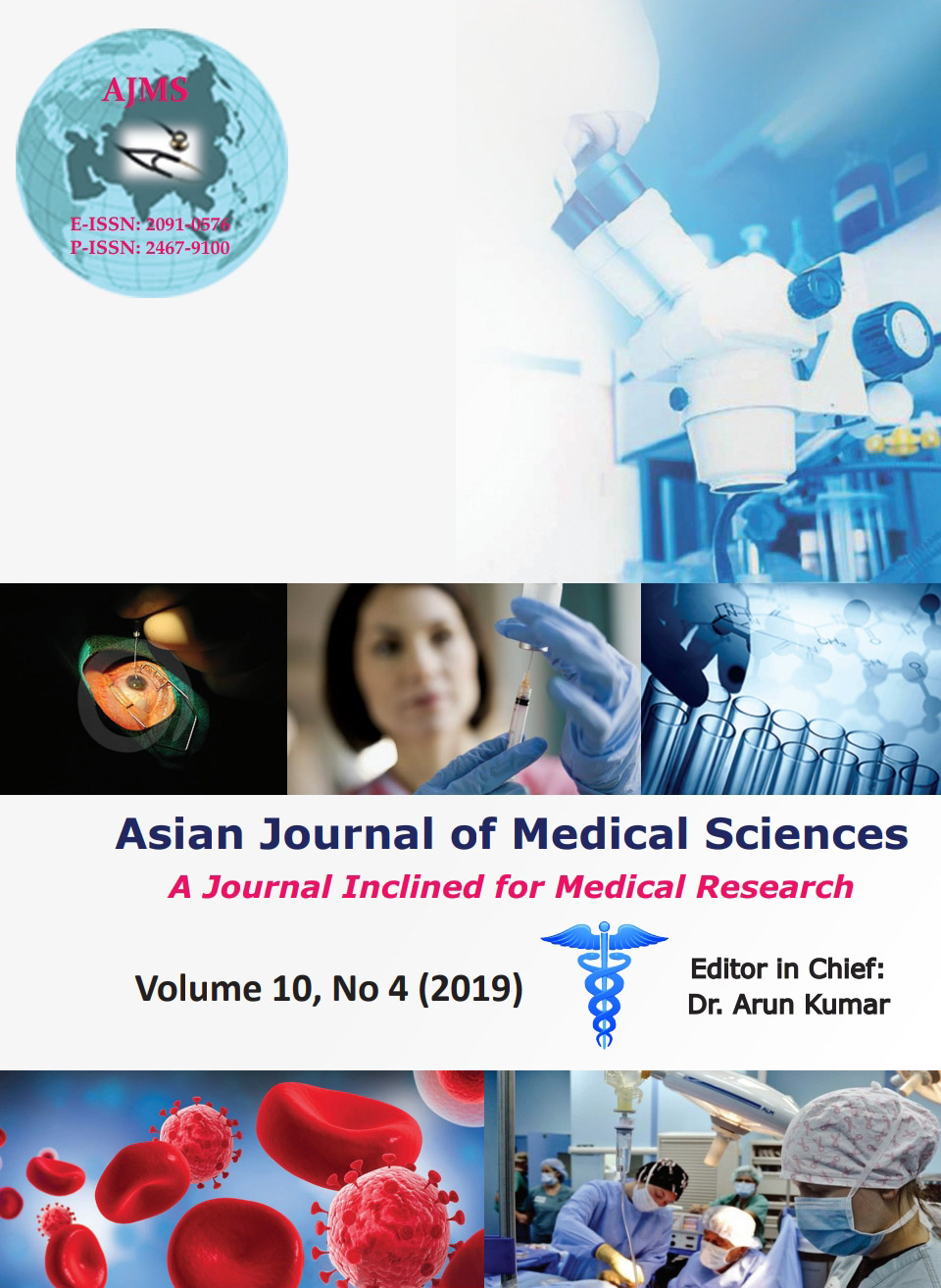A study on distribution and gender wise predilection of lip print pattern
Keywords:
Identification, Gender, Lip Prints, ForensicAbstract
Background: Lip prints are considered as very useful and are to be important forms of transfer evidence like finger prints. Studies have shown that even lip prints are unique for an individual and hence have the potential for personal identification.
Aims and Objectives: To correlate the distribution of lip print pattern and its gender wise predominance.
Material and Methods: The study comprised of 100 Nepalese medical students (50 males; 50 females). A photographic method was adopted rather than the old traditional lipstick method. The photographed lip prints were transferred into a computer to identify the character/lip print pattern. Statistical analysis was done using the SPSS (version 23.0) software package and Chi-square test was applied to evaluate the existence of correlation of lip print pattern with gender.
Results: Type- II lip print pattern was frequently observed in all the four quadrants of both the sexes. This was followed by in order Type-I’>Type-I> Type-IV and Type-III lip patterns. There was a difference in gender wise distribution of lip prints.
Conclusion: Further specific population based and gender specific studies on lip prints with larger sample size are required for comparison of lip prints with gender, so that a database could be created and used for representing sex differentiation.
Downloads
Downloads
Published
How to Cite
Issue
Section
License
Authors who publish with this journal agree to the following terms:
- The journal holds copyright and publishes the work under a Creative Commons CC-BY-NC license that permits use, distribution and reprduction in any medium, provided the original work is properly cited and is not used for commercial purposes. The journal should be recognised as the original publisher of this work.
- Authors are able to enter into separate, additional contractual arrangements for the non-exclusive distribution of the journal's published version of the work (e.g., post it to an institutional repository or publish it in a book), with an acknowledgement of its initial publication in this journal.
- Authors are permitted and encouraged to post their work online (e.g., in institutional repositories or on their website) prior to and during the submission process, as it can lead to productive exchanges, as well as earlier and greater citation of published work (See The Effect of Open Access).




